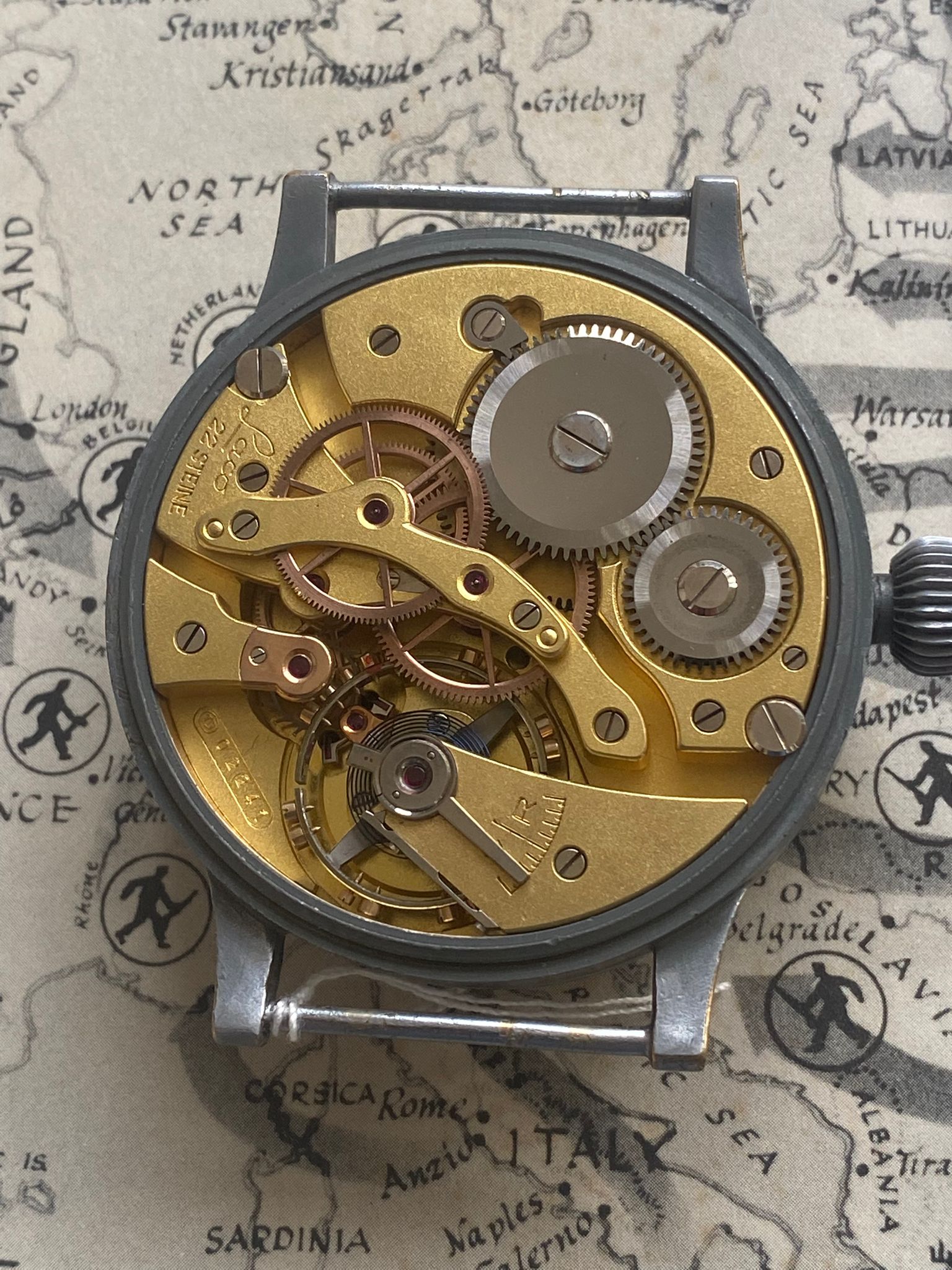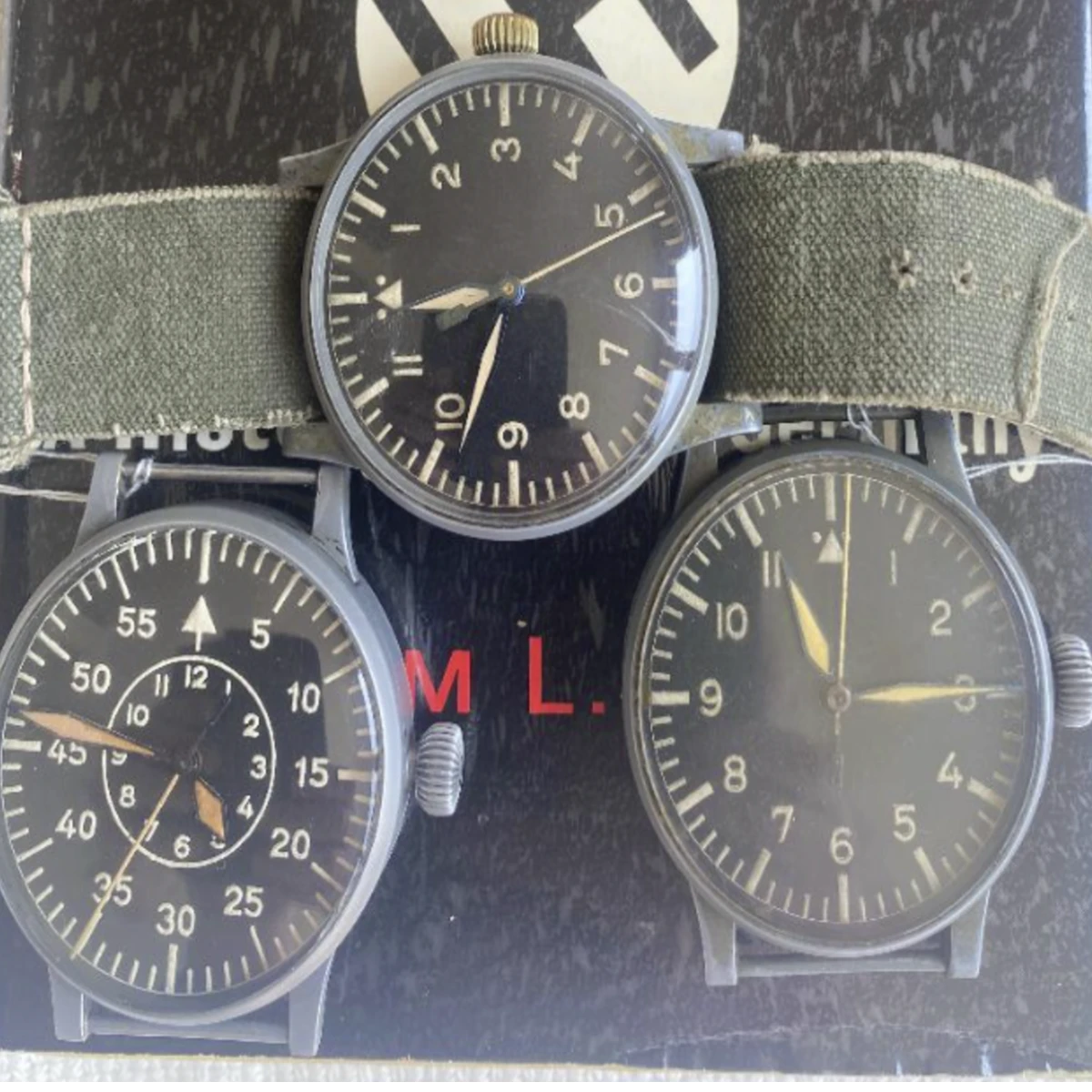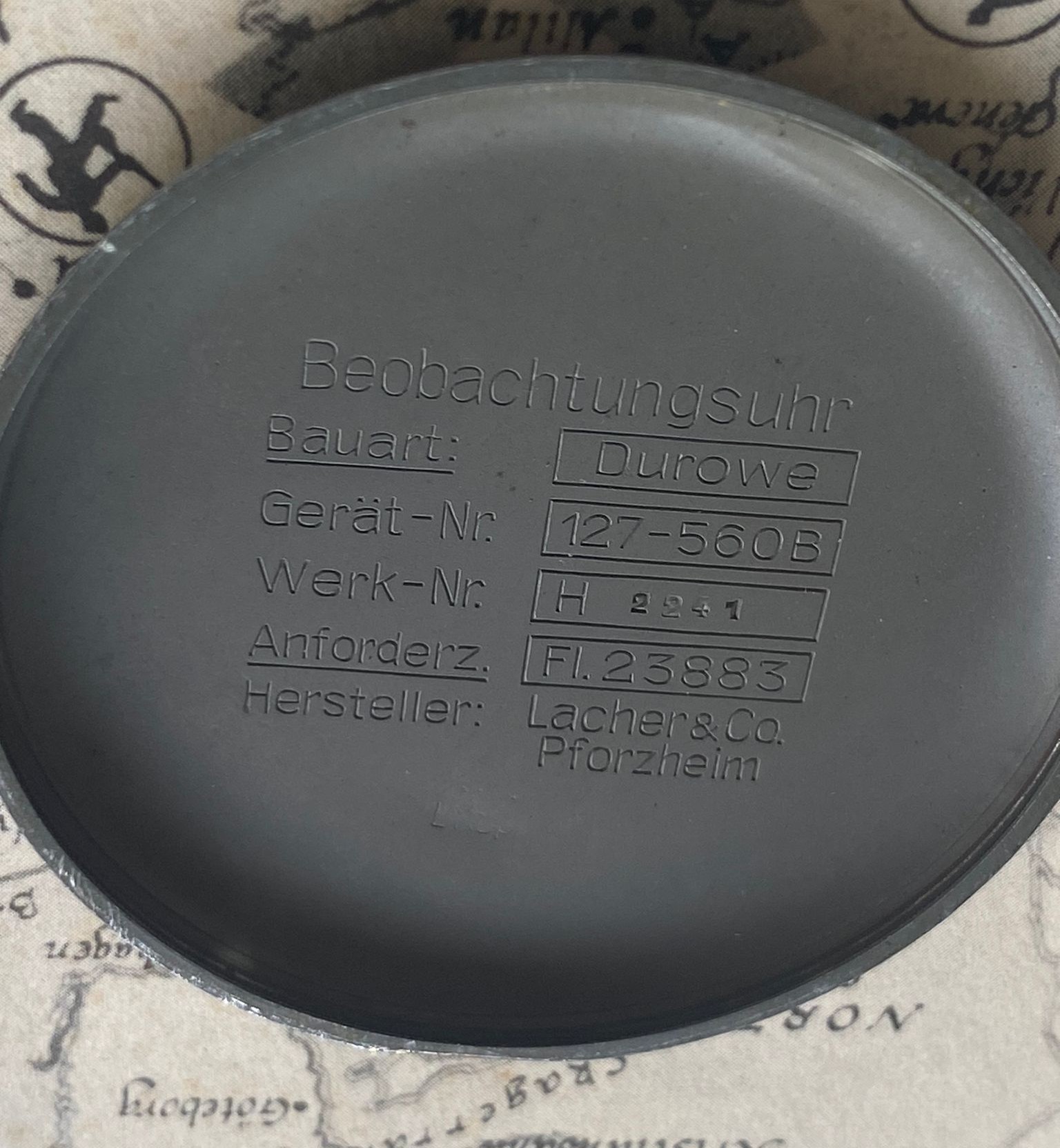B‑Uhren (short for Beobachtungsuhren, or “observer’s watches”) were purpose‑built navigation instruments issued to Luftwaffe flight crews during the Second World War. Designed to be read at a glance under harsh conditions, they set the blueprint for the modern pilot’s watch.
At around 55 mm in diameter, cases were deliberately large for legibility and to house precise, pocket‑watch‑grade movements. An oversized “onion” crown allowed winding and setting while wearing gloves, and extra‑long riveted leather straps were meant to fit over flight jackets. Hacking seconds for accurate time‑setting was required.

Two dial layouts became standard. Baumuster A (Type A, c. 1939) shows hours 1–11 with a triangle at 12. Baumuster B (Type B, from 1941) adds a prominent outer minutes track (5–55) with a smaller inner hour ring (1–12). Both used high‑contrast Arabic numerals and luminous paint for maximum clarity.

Production was spread across five manufacturers under RLM specifications: A. Lange & Söhne, Laco (Lacher & Co.), Stowa, Wempe, and IWC. Cases often carry the “FL 23883” designation associated with aviation navigation equipment, and casebacks feature issue and inspection markings.

The RLM first issued a high‑grade timepiece specification in 1935. Materials and construction followed it closely: nickel‑plated brass cases around 55 mm with large, high‑contrast dials for night operations. On IWC examples, an inner soft‑iron cage helped shield the movement from strong magnetic fields inside aircraft cabins.
For collectors, originality is everything: correct A/B dial for the reference, matching hands and lume, period crowns, and unpolished or sympathetically preserved cases. Many examples have replacement straps (expected) but desirable watches retain period hardware and clear engravings. As with any radium‑lumed piece, handle responsibly and consider expert servicing; water resistance should never be assumed.
While UK and Allied military watches are often the most sought‑after, there remains strong interest in German B‑Uhren for their historical significance and uncompromising, utilitarian design.
Though born from military necessity, the B‑Uhr’s legibility, tool‑driven design, and functional purity continue to influence contemporary pilot’s watches—and remain a cornerstone for enthusiasts of aviation timekeeping history.